This was published 5 years ago
Copenhagen, Denmark: Lonely Planet's best city to visit in 2019, with good reason
By Steve McKenna
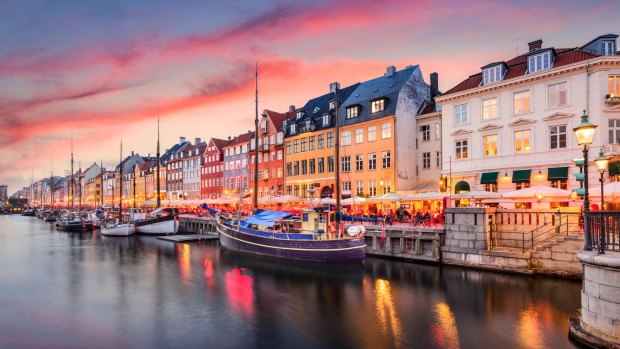
Copenhagen, Denmark on the Nyhavn Canal.Credit: Shutterstock
So there you are, strolling leisurely beside Copenhagen's picturesque harbour, admiring the beautifully renovated warehouses and shiny contemporary architecture, when all of a sudden a voice in immaculate English, with a slight Scandi twang, says, "Excuse me, this lane is for bicycles."
I look down and see I'm standing on a path that, very clearly, has a bike symbol marked on it. I apologise and shuffle back to the lane designated for pedestrians, a little embarrassed but confident I'm not the only tourist to make this mistake in Copenhagen, one of the planet's most pedal-friendly cities.
It's said that 400 kilometres of cycle paths snake through the Danish capital, and that around 50 per cent of residents regularly bike to work, school or university (and the pub). There are ample paths and promenades for walkers, too, but as they're often adjacent to the cycle lanes, it's easy to drift, especially when you're distracted by something, as you often are in Copenhagen, which Lonely Planet has decreed the world's top city to visit in 2019.
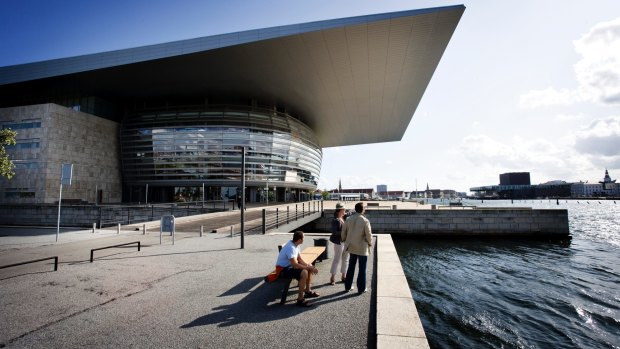
Costing about US$500 million, the Copenhagen Opera House was designed in so-called "neo-futuristic" fashion by the late Danish architect Henning Larsen, who trained with Utzon. It was panned by critics when it opened in 2004. Some dismissed it as a spaceship or the grille of a vintage Pontiac car.Credit: Ty Stange
This one-time Viking fishing village became the capital of Denmark in the 15th century and its majestic regal sites and palaces are among its leading attractions, along with the Tivoli Gardens, an eclectic theme park at the heart of the city, and the Little Mermaid, a bronze statue immortalising one of the fairytale characters of Danish writer Hans Christian Andersen. Perched on a rock, close to Copenhagen's cruise port, it's a fair trek from the city centre and almost everyone who comes wonders what the fuss is about when they see its modest size.
Far more visually striking are the modern landmarks that fringe the shores closer to town and that are helping to revitalise derelict naval and industrial zones.
The newest example is Blox built on the site of a former brewery near the Danish parliament and HC Andersen Boulevard (a road, incidentally, that isn't as idyllic as it sounds – it's central Copenhagen's busiest thoroughfare, its six lanes slicing through the city's core).
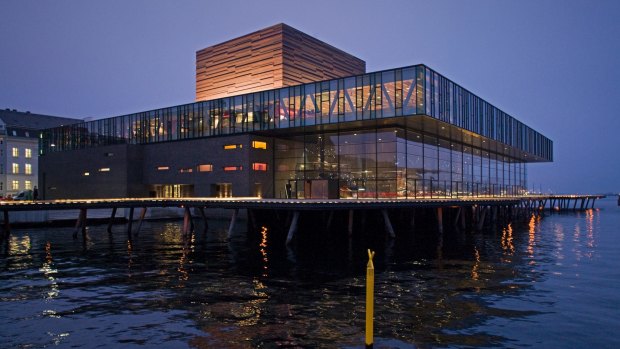
The Playhouse in Copenhagen.Credit: Jens Markus Lindhe
Unveiled in May, this jumble of glassy cubes of varying shapes and sizes seemingly stacked atop one another, has been labelled a "micro-city within a city" and contains housing, offices, work spaces, a gym and enticing draws for culture vultures and foodies.
You'll find Blox Eats, which is co-owned by Claus Meyer, co-founder of Noma which has been rated world's best restaurant several times and has become a legend of "new Nordic" cuisine. It recently moved to a new location near Christiania, a hippie-ish commune in Copenhagen's east, and tables there are still notoriously tricky to come by but Blox Eats has a no-reservations policy.
It's a very different affair, though. Instead of elaborate 17-course tasting menus à la Noma, it keeps things relatively simple with salads, baked goodies and smorrebrod (Danish open-faced sandwiches), plus tantalising soups, such as a Thai-style offering with pollock (a North Atlantic fish), mussels, noodles, herbs, coconut and crispy crudites). Menus change weekly and at least 30 per cent of ingredients are organic.
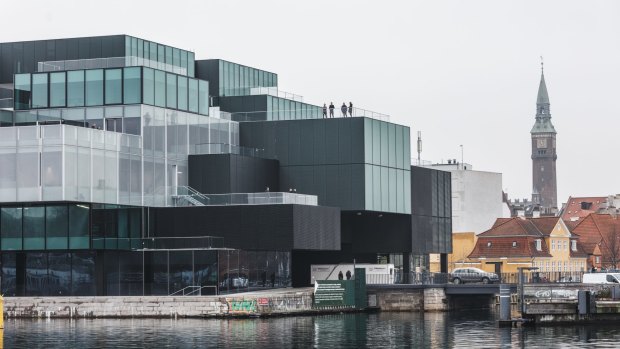
Unveiled in May, this jumble of glassy cubes of varying shapes and sizes seemingly stacked atop one another, has been labelled a "micro-city within a city" and contains housing, offices, work spaces, a gym and enticing draws for culture vultures and foodies.Credit: Rasmus Hjortshøj
Blox Eats' first-floor food hall is open for lunch on weekdays, while its ground-floor, espresso-scented cafe-eatery welcomes customers daily until 10pm (weekend brunch is one enticing option).
Blox is also home to the Danish Architecture Centre and its DAC Cafe, which has three rooftop terraces with splendid views of Copenhagen. The Centre's galleries and gift shop showcase the Danish flair for design, which infuses everything from landmark buildings to the furniture inside. A recent exhibition explored the genius of Jorn Utzon, the Copenhagen-born mastermind of the Sydney Opera House.
It's somewhat ironic, I ponder as I exit the building, that Blox was crafted by OMA (Office for Metropolitan Architecture), a practice founded by Dutch architect Rem Koolhaas.
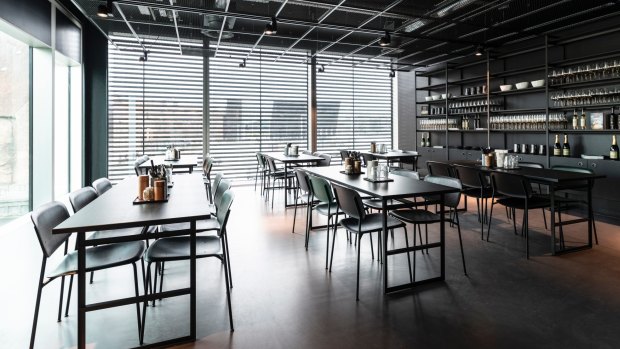
Blox Eats.Credit: Martin Kaufmann
Danish fingerprints are, however, all over the design of other contemporary gems flanking the harbour, including the Black Diamond, a pebble's throw from Blox. Clad in polished black granite, it was completed in 1999, as a shiny extension to the red-brick Royal Danish Library. Skywalks connect the two sections, which couldn't be more different in style and vibe. While the original part feels a bit Hogwarts, with wood panelled reading areas, antique bookshelves and hushed voices, the Black Diamond is flooded with natural light thanks to its tall atrium. There's a vibrant cafe buzzing with Copenhageners of all ages, plus a concert hall and exhibition spaces.
Dubbed a "theatre machine", the Royal Danish Playhouse is another key cultural venue in a gleaming boxy shell. Renowned for its ballet and drama productions – ever fancied watching Shakespeare in Danish? – it's around the corner from Nyhavn, a cobbled quayside tourist magnet lined with yachts and pastel-hued 17th and 18th century townhouses.
Looming diagonally across the harbour is the most controversial of the city's 21st century icons. Costing about US$500 million, the Copenhagen Opera House was designed in so-called "neo-futuristic" fashion by the late Danish architect Henning Larsen, who trained with Utzon. It was panned by critics when it opened in 2004. Some dismissed it as a spaceship or the grille of a vintage Pontiac car.
Larsen himself reportedly reckoned it looked like a toaster and regarded it as a "failed compromise" (he had creative differences with the project's backer, Danish shipping magnate, Maersk McKinney Moller). I can't help but like it, especially its enormous cantilevered "lid". As with many of Copenhagen's prominent new buildings, it's ultra-mesmerising after dark, illuminated with colour that reflects off the water.
The opera house is linked to Nyhavn by water bus and also via Inderhavnsbroen, one of the dual cyclist-pedestrian bridges that swerve over the harbour. Guided tours reveal the building's stunning ensemble of limestone, oak, glass, bronze, maple, gold leaf and Sicilian marble. On a tour of the building, visitors are led round the backstage areas and into the vast main auditorium which can seat an audience of around 1500, who come for everything from Puccini to Kylie (she performed here in November).
From the building's lobby, there's a wonderful panorama of Copenhagen's spire-dotted skyline. Glance across the harbour and you'll see the royal district of Frederiksstaden, home to Amalienborg, residence of Margrethe II, Queen of Denmark, and Frederik's Church, a neoclassical jewel with an incredible green copper dome.The Marble Church, as it's alternatively known, was a project involving two high-profile 18th century architects: a Dane, Nicolai Eigtved, and a Frenchman, Nicolas-Henri Jardin.
For dinner, I go Gallic-Nordic at Zeleste, a charming restaurant serving Danish food with a French twist on Store Strandstraede, an affluent street between Nyhavn and Frederiksstaden. Occupying a quaint 17th century building, with rustic furniture, fireplaces and "Copenhagen's cosiest courtyard", Zeleste scores highly on the hygge scale.
Hygge, pronounced hoo-gah, is a Danish phrase for conjuring a warm atmosphere and enjoying the good things in life with loved ones. With a glass of Loire Valley sauvignon blanc for company, and jazzy trumpet tunes floating through the air, I have chilli chickpea salad with mustard vinaigrette, codfish with kale and mussel foam and a "deconstructed" cheesecake, its crushed base sprinkled with edible flowers onto creamy white chocolate.
Like so many things in Copenhagen, it simply has to be photographed, and, thankfully, it's utterly, lip-lickingly delicious as well.
FIVE MORE THINGS TO SEE AND DO IN COPENHAGEN
TORVEHALLERNE
This trendy covered market near Norreport Station attracts a diverse crowd, with more than 60 stands selling oodles of fresh produce and cosmopolitan cuisine from Italy, Japan, Spain and Scandinavia.
FURNITURE STORES
Sofas and armchairs, mirrors and lampshades, Copenhagen's furniture stores stock gorgeously-crafted products from Denmark and the world. Paustian House, a large harbourside showroom designed by Jorn Utzon in collaboration with his sons, Jan and Kim, is a joy to browse.
BAGSVAERD CHURCH
Completed in 1973, the same year the Sydney Opera House was opened, Jorn Utzon's modernist Lutheran house of worship has a dreamy white interior and is worth the 12-kilometre trip to the city's northern suburbs.
NORDIC NOIR
Take a Nordic noir-themed walking tour and discover the atmospheric filming locations of The Killing and The Bridge, the hit television series shot in Copenhagen.
FREDERIKSBERG GARDENS
This delightful urban park is a peaceful expanse of lakes, lawns and woodlands, also home to a royal palace, Chinese pavilion and Copenhagen Zoo.
TRIP NOTES
Steve McKenna was a guest of Collette.
MORE
STAY
Admiral Hotel is housed in a converted 18th century granary by the harbour. Rooms from 850DKK. See admiralhotel.dk/en
VISIT
Copenhagen and other Scandinavian destinations can be booked as part of a Collette escorted journey. See gocollette.com
See also: The world's 19 most underrated cities (and six most overrated)
See also: Three reasons why New Orleans is The New York Times' No. 1 city for 2018
Sign up for the Traveller Deals newsletter
Get exclusive travel deals delivered straight to your inbox. Sign up now.